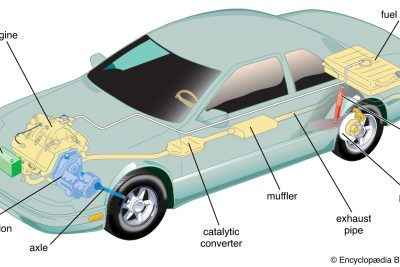
Tunable Laser: Exploring Its Spectrum and Applications

In the realm of photonics and optics, the tunable laser stands out as an exceptional light source, providing flexibility in wavelength selection across a broad spectrum. These advanced devices enable researchers and industries to harness the power of light, allowing for innovative applications in diverse fields. From telecommunications to medical diagnostics, the ability to rapidly adjust the wavelength of a laser can open up new possibilities and enhance existing technologies.
The significance of tunable lasers cannot be overstated, as they fill a crucial gap in the availability of light wavelengths. In contrast to lasers that operate at fixed wavelengths, tunable lasers offer a customizable tunable spectrum, thereby catering to the specific needs of various applications. By dynamically adjusting their emission frequency, these lasers can emit light across the visible, near-infrared, and ultraviolet ranges, making them invaluable tools for scientists and engineers. This article will explore the spectrum of tunable lasers and delve into their key applications across different sectors.
- Understanding Tunable Lasers
- The Spectrum of Tunable Lasers
- Operating Principles of Tunable Lasers
- Types of Tunable Lasers
- Applications in Communication Technologies
- Role in Medical and Biomedical Applications
- Contribution to Spectroscopy and Analytical Chemistry
- Impact on Environmental Monitoring
- Future Trends in Tunable Laser Technology
- Conclusion
Understanding Tunable Lasers
A tunable laser is a laser device that allows the operator to adjust its output wavelength, offering flexibility and adaptability that makes them particularly useful for a wide range of applications. The core principle behind a tunable laser lies in its ability to modify the properties of the laser medium or the optical cavity, allowing it to emit light at different wavelengths. This adaptability contrasts with traditional lasers, which operate at fixed wavelengths. The versatility of tunable lasers has made them integral in research, technology development, and industrial applications.
Key Components of Tunable Lasers
- Gain Medium: The medium from which the laser derives its amplifying properties, typically made from gases, liquids, or solid-state materials that can be tuned.
- Optical Cavity: A resonant optical chamber where the light oscillates, allowing for feedback to amplify the light and achieve lasing.
- Tuning Element: Devices like prisms, gratings, or etalons used to adjust the wavelength of the emitted light.
The Spectrum of Tunable Lasers
The spectrum of tunable lasers varies based on their design and operational mechanism. These lasers can span a range of wavelengths across the electromagnetic spectrum, from the visible to several micrometers in the infrared range. The unique ability of tunable lasers to access such a wide spectrum enables significant advancements in various fields.
Operational Wavelength Ranges
Tunable lasers are capable of emitting light within different parts of the spectrum. The following ranges represent some of the common operational wavelengths:
- Visible Light: Approximately 400 to 700 nm, useful for applications in laser projection, entertainment, and display technologies.
- Near-Infrared: Ranges from 700 nm to about 2.5 µm, often employed in telecommunications and optical sensing.
- Ultraviolet: Generally from 10 nm to 400 nm, applicable in fluorescence microscopy and photolithography.
Operating Principles of Tunable Lasers
The operational mechanism of tunable lasers hinges on their ability to change the conditions within their optical cavities. The lasing wavelength can be adjusted by altering the characteristics of the gain medium, the optical elements, or the external conditions like temperature and pressure. As the resonant frequencies shift, so does the output wavelength of the laser.
Wavelength Selection Mechanisms
There are several common mechanisms used in tunable lasers to select or tune wavelengths:
- Grating-Based Tuning: Utilizing diffraction gratings to select specific wavelengths as they pass through.
- Prism-Based Tuning: Employing prisms to cause refraction and physically change the output angle and wavelength.
- Electro-Optic Tuning: Utilizing the electro-optic effect to adjust the phase of light in a crystal, allowing for real-time wavelength changes.
Types of Tunable Lasers
Tunable lasers come in various configurations, each with distinct advantages and suitable applications. Here, we will explore some common types of tunable lasers:
Dye Lasers
Dye lasers are widely known for their extensive tunable range, covering the visible to near-infrared spectrum. By using organic dyes as the gain medium, these lasers can achieve tunable outputs, making them ideal for spectroscopy and photochemical applications.
Semiconductor Lasers
Semiconductor lasers, often referred to as diode lasers, exhibit tunability primarily through temperature control and current modulation. They are utilized in telecommunications and optical data storage, offering compact size and efficiency.
Solid-State Lasers
Solid-state tunable lasers leverage solid crystal or glass as the gain medium. They are known for high power and robustness, making them ideal for industrial cutting and marking purposes.
Applications in Communication Technologies
Tunable lasers are indispensable in communication technologies, where their ability to transmit information over various wavelengths plays a crucial role. In optical fiber communications, for instance, tunable lasers provide flexibility in wavelength allocation, reducing congestion and improving data transmission rates.
Wavelength Division Multiplexing (WDM)
Wavelength Division Multiplexing (WDM) utilizes tunable lasers to enable multiple signals to operate on different channels within the same optical medium. This capacity for simultaneous data transmission significantly enhances the overall efficiency and bandwidth of communication systems.
Role in Medical and Biomedical Applications
The impact of tunable lasers extends to the field of medicine, particularly in diagnostic and therapeutic applications. Their precision in wavelength selection enhances imaging techniques and surgical procedures.
Laser Surgery
Tunable lasers are utilized in laser surgery for targeting specific tissues based on their unique absorption characteristics. By selecting the appropriate wavelength, medical professionals can optimize the energy delivered to tissues while minimizing damage to surrounding areas.
Imaging Techniques
In biomedical imaging, tunable lasers are used in techniques such as optical coherence tomography (OCT) and fluorescence imaging. These applications benefit from the ability to tune wavelengths, facilitating detailed visualization of biological structures.
Contribution to Spectroscopy and Analytical Chemistry
Tunable lasers have revolutionized the field of spectroscopy, offering a powerful tool for analyzing materials at molecular and atomic levels. Their ability to produce highly specific wavelengths enhances precision in spectral measurements.
Infrared Spectroscopy
In infrared spectroscopy, tunable lasers are employed to identify chemical bonds and functional groups within samples, providing critical information for material characterization and quality control.
Raman Spectroscopy
Raman spectroscopy benefits from tunable lasers by using specific wavelengths to excite molecular vibrations, yielding essential insights into chemical structures and compositions.
Impact on Environmental Monitoring
Tunable lasers have significant applications in environmental monitoring, particularly in the detection of gases and pollutants. The ability to tune wavelengths enables sensitive detection of specific chemical species in the atmosphere.
Air Quality Monitoring
Specific wavelengths emitted by tunable lasers can resonate with molecular vibrations of pollutants like carbon dioxide or methane. This property allows for real-time monitoring of air quality, providing essential data for environmental assessments.
Future Trends in Tunable Laser Technology
The future of tunable laser technology promises exciting advancements driven by ongoing research and development. Enhanced tunability, efficiency, and miniaturization are expected to shape the next generation of lasers.
Integration with Photonic Technologies
With the development of integrated photonics, tunable lasers will be more easily incorporated into compact and efficient devices, enhancing functionality in telecommunications and sensing applications.
Advancements in Materials
Innovations in materials science are likely to produce new gain media that offer broader tuning ranges and higher output powers, expanding the possibilities for tunable laser applications.
Conclusion
Tunable lasers play an influential role across a vast array of fields, offering adaptable light sources that extend across a broad spectrum. Their applications in communication technologies, medical fields, spectroscopy, and environmental monitoring highlight their versatility and importance. As advancements in tunable laser technology continue to emerge, the potential for new discoveries and enhanced applications will undoubtedly grow. The ongoing exploration of the tunable spectrum reaffirms the significance of tunable lasers, paving the way for innovative solutions to meet future challenges.
Did you find this article helpful? Tunable Laser: Exploring Its Spectrum and Applications See more here Education.
Leave a Reply






Related posts